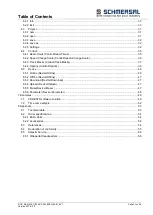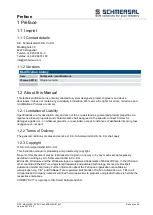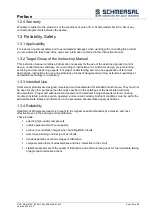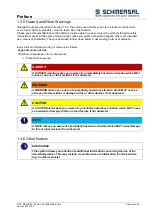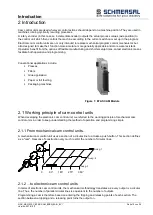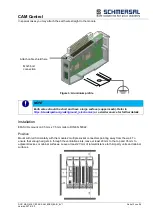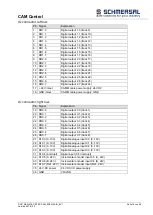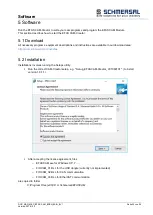
Preface
DOC_MAN_MEC_EFAS-CAM_#SEN_#AIN_#V1
Seite 8 von 56
Version: 2018 / 02
1.3.8 Electromagnetic Compatibility
Definition
Electromagnetic compatibility is the ability of a device to function satisfactorily in its electromagnetic
environment without itself causing any electromagnetic interference that would be intolerable to other
devices in this environment .
Of all known phenomena of electromagnetic noise, only a certain range occurs at the location of a given
device. These kinds of noise are specified in the applicable product standards.
The design and immunity to interference of programmable logic controllers are internationally governed by
standard
IEC 61131-2 which, in Europe, has been the basis for European Standard
EN 61131-2.
Information
Refer to IEC TR 61131-4, User's Guideline, for general installation instructions to be complied
with to ensure that hardware interface factors and the ensuing noise voltages are limited to
tolerable levels.
Interference Emission
Interfering emission of electromagnetic fields, HF
compliant to EN 55011, limiting value class A, Group 1
Information
If the controller is designed for use in residential areas, high-frequency emissions must comply
with limiting value class B as described in EN 55011.
Fitting the controller into earthed metal cabinets and installing filters in the supply lines may
produce a shielding compliant to the above standard.
General Notes on Installation
As component parts of machines, facilities and systems, electronic control systems must comply with valid
rules and regulations, depending on their field of application.
General requirements concerning the electrical equipment of machines and aiming at the safety of these
machines are contained in Part 1 of European Standard EN 60204 (corresponds to VDE 0113 part 1).
Electrical Immission Safeguard
To eliminate electromagnetic interference, connect the control system to the protective earth or functional
earth conductor. Practice best cable routing.
Cable Routing and Wiring
Keep power circuits separate from control circuits:
DC voltages
60 V ... 400 V
AC voltages
25 V ... 400 V
Joint laying of control circuits is allowed for:
shielded data signals
shielded analogue signals
unshielded digital I/O lines
unshielded DC voltages < 60 V
unshielded AC voltages < 25 V



